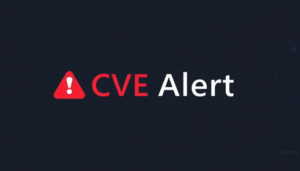CVE Alert: CVE-2025-61832 – Adobe – InDesign Desktop
CVE-2025-61832
HIGHNo exploitation known
InDesign Desktop versions 20.5, 19.5.5 and earlier are affected by a Heap-based Buffer Overflow vulnerability that could result in arbitrary code execution in the context of the current user. Exploitation of this issue requires user interaction in that a victim must open a malicious file.
CVSS v3.1 (7.8)
AV LOCAL · AC LOW · PR NONE · UI REQUIRED · S UNCHANGED
Vendor
Adobe
Product
InDesign Desktop
Versions
0 lte 19.5.5
CWE
CWE-122, Heap-based Buffer Overflow (CWE-122)
Vector
CVSS:3.1/AV:L/AC:L/PR:N/UI:R/S:U/C:H/I:H/A:H
Published
2025-11-11T17:00:32.947Z
Updated
2025-11-11T17:00:32.947Z
AI Summary Analysis
**Risk verdict**: High risk requiring user interaction, with potential arbitrary code execution if a malicious InDesign file is opened.
**Why this matters**: The vulnerability carries a 7.8 CVSS base score with high impacts to confidentiality, integrity and availability. In practice, an attacker only needs a user to open a crafted file, which could lead to full device compromise or data exposure within the user’s context, especially on desktops used for design workflows.
**Most likely attack path**: An attacker delivers a malicious InDesign document via phishing or shared file delivery. The user opens it, triggering a heap-based overflow that executes code locally under their rights; no privileges are required, but exploitation relies on user action. Lateral movement depends on existing access and privileges on the workstation.
**Who is most exposed**: Organisations with design/publishing teams using InDesign across Windows or macOS, where files are routinely opened from email, shared drives or cloud collaboration links.
**Detection ideas**:
- Anomalous InDesign process activity following file openings (unexpected child processes or memory spikes).
- Crashes or memory corruption events shortly after opening a file, with heap-related crash signatures.
- Unusual file access patterns around recently opened InDesign documents (network shares, temp folders).
- Endpoint telemetry showing memory write anomalies or code execution attempts attributed to InDesign.
- Security alerts tied to known maldocs or suspicious metadata in InDesign templates.
**Mitigation and prioritisation**:
- Apply the vendor patch to the affected InDesign versions; validate deployment in a test group before organisation-wide rollout.
- Enforce automatic updates and implement application whitelisting to prevent unapproved versions.
- Strengthen endpoint detection and response for InDesign activity: memory/heap anomalies, rapid crash events, and process lineage.
- Restrict user privileges; run design workstations under standard accounts to limit impact of exploitation.
- Enhance email and file screening for InDesign attachments or templates; disable auto-open of external templates where feasible. If KEV or EPSS data becomes available, adjust prioritisation accordingly.
Support Our Work
A considerable amount of time and effort goes into maintaining this website, creating backend automation and creating new features and content for you to make actionable intelligence decisions. Everyone that supports the site helps enable new functionality.
If you like the site, please support us on Patreon or Buy Me A Coffee using the buttons below.
AI APIs OSINT driven New features


